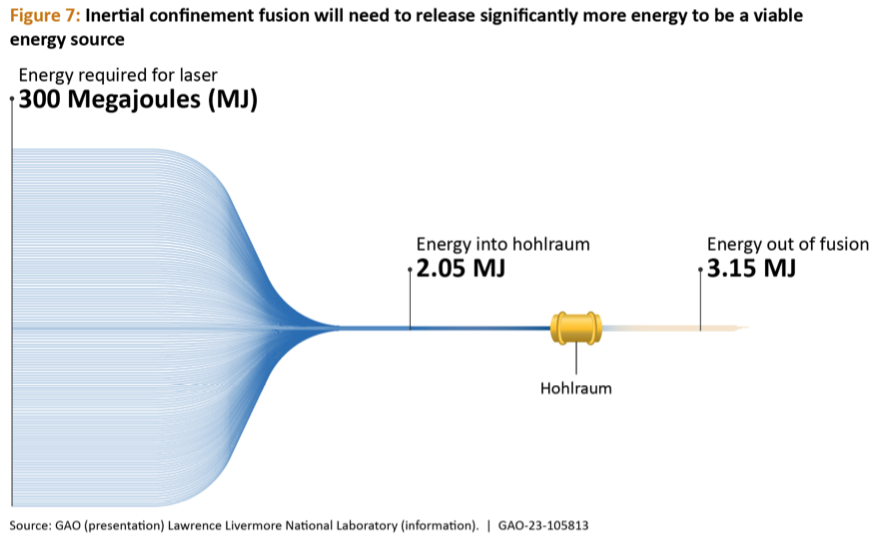Peter Lobner
In February 2021, I posted the article “The Fork in the Road to Electric Power From Fusion,” with links to a set of supporting articles that provide details on 18 fusion power reactor development projects, mostly at private firms.
In March 2023, the United States Government Accountability Office issued their report GAO-23-105813, “Technology Assessment – Fusion Energy – Potentially Transformative Technology Still Faces Fundamental Challenge.” This GAO report provides a comprehensive overview of the current status of several different fusion energy concepts being developed worldwide. You can download a copy of this GAO report here: https://www.gao.gov/assets/gao-23-105813.pdf
The American Nuclear Society review of the GAO report is contained in an article, “New GAO report focuses on fusion,” which is available here: https://www.ans.org/news/article-4891/new-gao-report-focuses-on-fusion/
ANS summarized GAO’s finding: “Despite decades of research and recent promising developments, the report notes, fusion science has still not achieved net energy gain.”
To illustrate this point, GAO commented on the recent high-profile announcement that a net fusion energy gain had been achieved during a test at the National Ignition Facility (NIF). GAO graphically showed how this claim is only true from the perspective of the small fusion reaction chamber (the Hohlraum) at the heart of NIF. As shown in the following GAO diagram, which appropriately treats the whole NIF as a “black box,” a total of 300 Megajoules (MJ) were input to the facility and only 3.15 MJ were generated by fusion reactions in the Hohlraum. That fusion power was absorbed by the Hohlraum and adjacent NIF structures and systems. No “net power” left the NIF “black box,” but then, NIF wasn’t designed to be a power plant.

As future claims of net energy gain are made by the various fusion power reactor development teams, think of each of their fusion facilities as a black box. The future of fusion-generated electricity depends first and foremost on being able to get much more energy out of the black box than went into it.